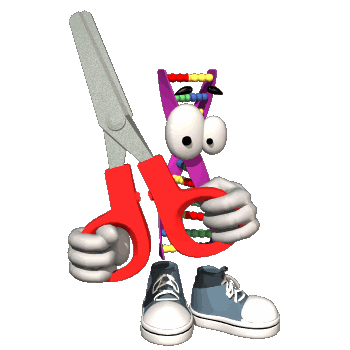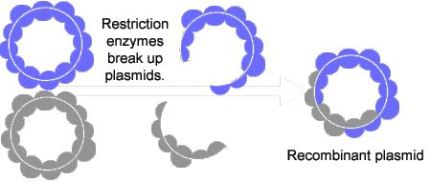Gene splicing is just what it sounds like: cutting the DNA of a gene to add base pairs. Contrary to the immediate image, however, no sharp instruments are involved; rather, everything is done chemically.
Chemicals called restriction enzymes act as the scissors to cut the DNA. Thousands of varieties of restriction enzymes exist, each recognizing only a single nucleotide sequence. Once it finds that sequence in a strand of DNA, it attacks it and splits the base pairs apart, leaving single helix strands at the end of two double helixes. Scientists are then free to add any genetic sequences they wish into the broken chain and, afterwards, the chain is repaired (as a longer chain with the added DNA) with another enzyme called ligase. Hence, any form of genetic material can be spliced together; bacteria and chicken DNA can, and have been, combined. More often, though, splicing is used for important efforts such as the production of insulin and growth hormone to cure human maladies.With modern splicing techniques, enough insulin can be produced for all diabetics. The insulin-producing genes from human DNA are spliced into plasmid DNA; the plasmids are then allowed to infect bacteria, and, as the bacteria multiply, large amounts of harvestable insulin are produced. Splicing has other practical medicinal uses, too. In July of 1996, a 68-year-old woman became the first patient to be treated for arthritis (a disease which affects an estimated 2.1 million Americans) via gene therapy. At the University of Pittsburgh, therapeutic DNA that blocks the production of a specific protein (IL-1) that causes arthritis pain was injected into two of her knuckles.
reference;
“The Gene School,” Think Quest; accessed on April 13, 2013.http://library.thinkquest.org/19037/therapy2.html


interesting stuff, keep up the posts, lookin forward to them